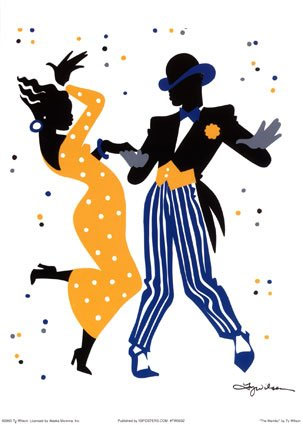|
CARIBBEAN MUSIC & DANCE |
| Home | PUERTO RICO | CUBA | DOMINICAN REPUBLIC |
|
Before the beginning of the 1940s, mambo was not a genre, but rather a section of another genre called danzón. Danzón originated from contradanzas of European countries such as France and Spain, combined with a livelier African rhythm. It was originally instrumental dance music, but singing was added in the 1930s due to the influence of son (or salsa), another genre of Cuban dance music.39 This influence was not restricted to just the singing but also to the rhythm to the point where some say mambo is a variant of son.40 The first mambo was a danzón titled “Mambo,” written by two musician brothers, Orestes and Cachao López in 1938. It was played by Antonio Arcaño, who felt the need to “return to a purely instrumental format in order to escape the uncertainties of featuring singers who would either become too popular and then leave or pass away.”41 His band gradually displaced the former two sections, playing only the climax of the dance music. It was a combination of complex, rhythmic melodies of the piano, violin, flute, and double bass, with the tumbadoras, güiro, and timbales. However, mambo was not accepted by all Cubans for some of them viewed it as “a bastard child of the danzón.”42 It was not until the influence of Pérez Prado that the genre of mambo became universally popular. This musician simplified the complex rhythms of mambo, adding jazz elements and singing. This form of mambo was sung by two altos, one tenor, a baritone accompanied by big band drums, five trumpets, two trombones, five saxophones, and Cuban percussions. When mambo reached Mexico and New York, it flourished rapidly. It was played in ballrooms and nightclubs of New York, especially the Palladium Ballroom. Because of its popularity, the late 1940s to the 1960s is known as the era of mambo kings.43 In 1954, Enrique Jorrín, and later Arthur Murray, produced another form of mambo that was more pop-oriented with more words in it and less rhythmically volatile, making it easier to dance to. This is known as the chachachá. Other forms of mambo, such as the boogaloo and pachanga, were also created.
|
|
|
